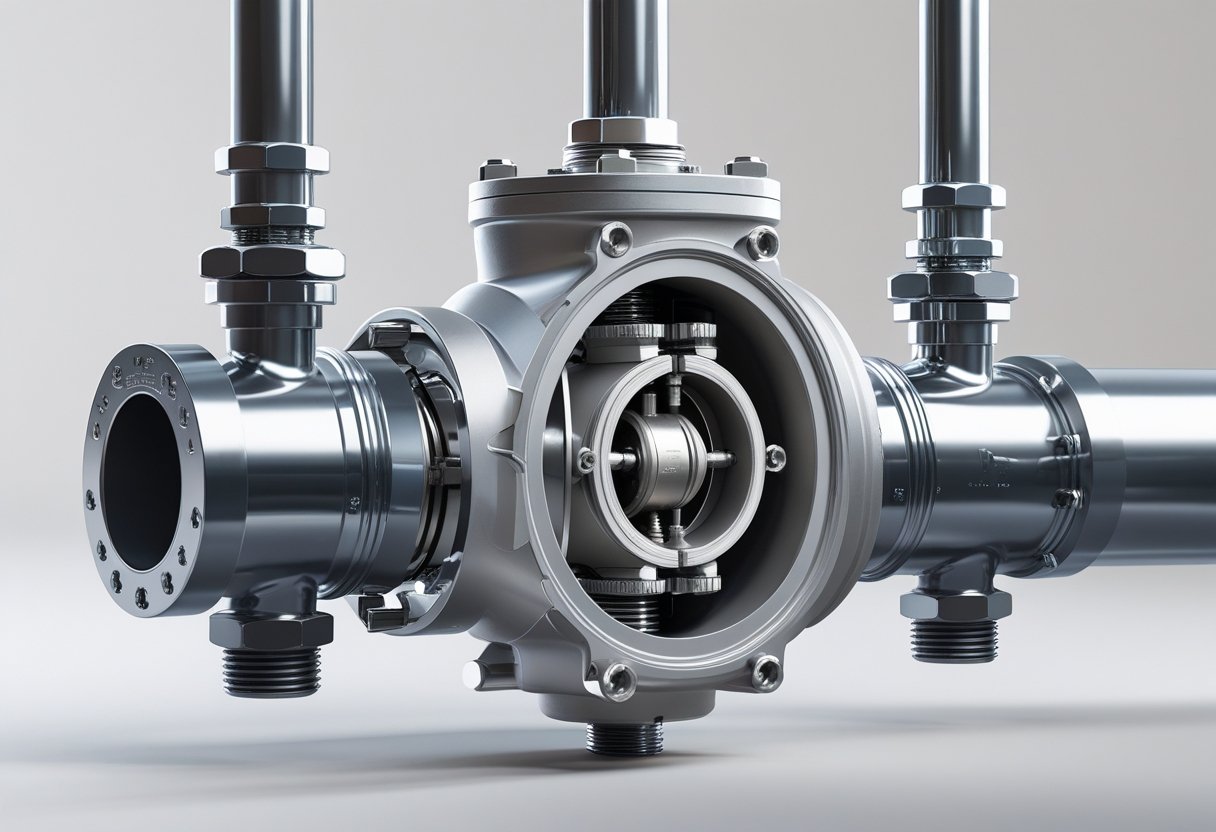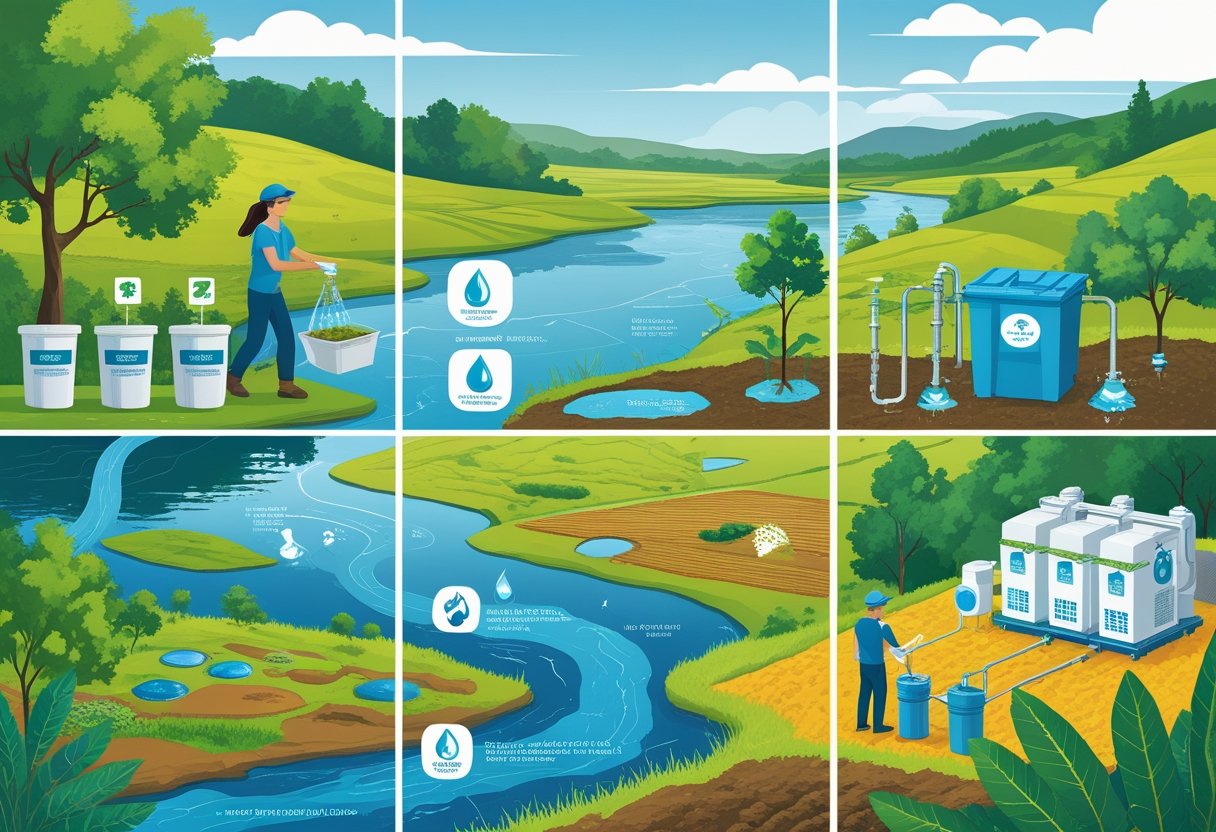Backflow preventer valves are essential components in plumbing systems, designed to safeguard your drinking water from contamination. These valves ensure that water flows in one direction, effectively preventing any potential backflow of contaminated water into your clean water supply. Understanding their function can help you appreciate the importance of proper maintenance and timely inspections.
If you own a property in San Diego County, ensuring your backflow preventer is in good working condition is crucial for both health and compliance reasons. Regular testing and maintenance from a trusted provider, like Pacific Backflow, can prevent issues before they become serious. With almost half a century of experience, our reliable services include testing, repairs, and installations that comply with local regulations.
Don’t take chances with your water supply. Protecting your home or business involves knowing how to manage backflow preventers effectively. Regular assessments conducted by professionals ensure your system remains functional and compliant, allowing you to focus on what truly matters—your peace of mind and the safety of your community's water supply.
What Is a Backflow Preventer Valve?
A backflow preventer valve is essential for protecting your water supply from contamination. This device ensures that water flows in a single direction, preventing reverse flow, which can occur due to various conditions in plumbing systems. Understanding its definition, functionality, and the risk of cross connections is critical for any property owner.
Definition and Purpose
A backflow preventer valve is a specialized device designed to prevent backflow in plumbing systems. Backflow refers to the unwanted reverse flow of water, which can introduce contaminants into clean water supplies. This device typically consists of multiple check valves that allow water to flow in one direction while blocking reverse flow.
You may find backflow preventers installed in various applications, including irrigation systems, industrial processes, and residential plumbing. Regular testing and maintenance ensure that these devices function properly and comply with local regulations. With services like those offered by Pacific Backflow, you can keep your backflow preventer in perfect working condition, providing peace of mind about your water quality.
How Backflow Occurs
Backflow can happen due to several reasons, primarily pressure changes in the water supply system. For instance, when there is a drop in water pressure, such as during firefighting, water from non-potable sources can flow back into clean water lines. Additionally, if a water main breaks, it can create a vacuum that draws contaminated water back into the system.
Backflow can also occur through fixtures and appliances, particularly in systems without proper backflow prevention measures. This is why understanding the mechanics of backflow is crucial for property owners. Implementing the right devices, like backflow preventers, is vital for preventing potential health risks associated with water contamination.
Cross Connections in Plumbing
A cross connection occurs when a potable water supply is connected to a source of contamination. This can happen in various scenarios, such as using garden hoses in combination with chemical sprayers or poorly designed plumbing fixtures. These connections significantly increase the risk of backflow.
Properly identifying and mitigating cross connections is essential to maintaining a safe water supply. Backflow preventers are specifically designed to address these risks by preventing contaminated water from re-entering the supply. Being proactive in managing these connections helps secure your drinking water and comply with health regulations. If you're unsure about your plumbing setup, consulting a professional service like Pacific Backflow can provide valuable insights and solutions.
Types of Backflow Preventer Valves
Backflow preventer valves are essential for protecting your water supply from contamination. Each type serves a specific purpose and is designed based on the potential risks associated with backflow. Here’s an overview of the most common types.
Double Check Valve Assembly
The Double Check Valve Assembly (DCVA) consists of two independent check valves in series. This design allows for redundancy, as both valves would need to fail for backflow to occur. DCVAs are primarily used in low to medium hazard applications.
Installation is straightforward, but regular maintenance is crucial to ensure both valves function properly. Annual testing is often required to verify compliance with local regulations. Pacific Backflow offers reliable testing and repair services, ensuring your DCVA operates at peak efficiency.
Reduced Pressure Zone Assembly
The Reduced Pressure Zone Assembly (RPZA) provides enhanced protection against backflow, particularly in high hazard scenarios. It features two check valves and a pressure relief valve. If backflow occurs, the relief valve discharges contaminated water to maintain system integrity.
This mechanism ensures that pressure differentials do not compromise drinking water safety. Regular maintenance and testing are critical, as malfunctioning components can lead to serious contamination risks. For added peace of mind, consider Pacific Backflow for your installation and maintenance needs.
Dual Check Valve
A Dual Check Valve is a simpler alternative to the Double Check Valve Assembly. It comprises two check valves but lacks some of the features found in higher-grade assemblies, such as a pressure relief mechanism. This type is generally used in non-potable applications where the risk of contamination is lower.
While they are easy to install and maintain, dual check valves may not be adequate for all scenarios. You should consult with professionals to determine whether this option meets your specific needs. Pacific Backflow can guide you in selecting the right device for your property.
Atmospheric Vacuum Breaker
The Atmospheric Vacuum Breaker (AVB) is designed to prevent backflow by using atmospheric pressure. It operates with a simple mechanism that creates a vacuum when the water supply drops. This action allows air to enter the system, effectively stopping backflow.
AVBs are typically used in irrigation and other outdoor applications. They are easy to install but should be located above the highest water outlet. Regular checks are recommended to ensure that the device is functioning correctly. Engage Pacific Backflow for expert installation and maintenance services.
How Backflow Preventer Valves Work
Backflow preventer valves are designed to protect potable water supplies from contamination. They achieve this by employing specific mechanisms that prevent the reverse flow of water, ensuring that contaminants do not enter drinking water systems. Below, the mechanisms of operation, prevention of back siphonage, and prevention of back pressure are explored in detail.
Mechanisms of Operation
Backflow preventer valves typically employ a combination of check valves and relief valves. The check valve ensures that water flows in one direction only. When water pressure is maintained, the valve remains closed, preventing any reverse flow. If a drop in pressure occurs in the system, a relief valve activates to release excess pressure into a vent, maintaining a safe operational environment.
Devices such as Reduced Pressure Zone (RPZ) assemblies offer multiple layers of protection. They combine two check valves with a pressure relief valve, ensuring that if one check valve fails, the other can still prevent backflow. This intricate design is essential in maintaining water safety across various applications. For installation or testing of these systems, you can rely on experts like Pacific Backflow for their extensive experience in San Diego County.
Prevention of Back Siphonage
Back siphonage occurs when there is a negative pressure in the water supply, causing contaminated water to be drawn back into the clean water system. Backflow preventers counteract this by utilizing air gaps and check valves. When a negative pressure event occurs, the check valve closes tightly, stopping contaminated water from entering the system.
To enhance protection, these systems often incorporate a design that creates an air gap between the water supply and the potential contamination source. This air gap acts as a barrier, effectively blocking any possibility of back siphonage. Regular testing of these systems is vital to ensure they function correctly, something Pacific Backflow prioritizes in their services.
Prevention of Back Pressure
Back pressure is generated when downstream pressure in a piping system exceeds the supply pressure, potentially forcing contaminated water back into the potable supply. Backflow preventer valves use built-in mechanisms to mitigate this risk. A check valve is a critical component that prevents back pressure by closing when it detects a backwards flow.
In more complex installations, RPZ devices are used to manage back pressure effectively. They provide a reliable means of controlling pressure levels, ensuring that safe drinking water is maintained even during fluctuations in the system. Utilizing backflow prevention devices is essential for compliance with health regulations and is an area where Pacific Backflow offers specialized services.
Application and Installation Considerations
When considering a backflow preventer valve, it is essential to focus on its applications in various settings and the specific installation requirements for each. Proper understanding of these factors contributes to maintaining the safety and integrity of your water supply.
Residential Plumbing Systems
For residential plumbing systems, using a backflow preventer is vital to protect your drinking water. You will typically need a Double Check Valve Assembly (DCVA) for lower-risk areas or a Reduced Pressure Zone (RPZ) assembly for high-hazard locations.
Installation Tips:
- Ensure accessibility for regular testing and maintenance.
- Position the shutoff valve close to the backflow device.
- Follow local codes and manufacturer guidelines for installation and testing requirements.
Regular annual testing is recommended to ensure compliance with safety regulations, and companies like Pacific Backflow can assist with these evaluations and necessary repairs.
Irrigation System Protection
In irrigation systems, backflow prevention is crucial to prevent contaminated water from entering potable supplies. This is especially important when using fertilizers and pesticides, which can create hazardous cross-connections.
Key Factors to Consider:
- Install a suitable backflow preventer like an RPZ to handle potential contaminants effectively.
- Ensure the assembly is above ground for easy maintenance.
- Regular checks and upgrades may be required based on changes in your system or local regulations.
Implementing a robust backflow prevention strategy safeguards your water quality and ensures compliance. Consult with professionals for installation to avoid costly mistakes.
Non-Potable Water Concerns
For systems using non-potable water, such as irrigation or industrial applications, backflow prevention becomes critical. Contaminants from these systems can pose severe health risks if allowed to infiltrate potable supplies.
Installation Considerations:
- Identify all potential cross-connections between potable and non-potable systems.
- Use a dedicated backflow prevention device designed specifically for non-potable applications.
- Ensure that devices remain accessible for testing and maintenance to mitigate risks.
It’s important to conduct routine checks and testing to maintain functionality and compliance. Working with expert services like Pacific Backflow helps manage these complexities effectively.
Selecting and Maintaining Backflow Preventer Valves
Selecting and maintaining backflow preventer valves is crucial for ensuring the integrity of your plumbing system and protecting your water supply. Knowing the right products, following proper installation guidelines, and adhering to routine testing will help you achieve optimal performance.
Choosing the Right Product
When selecting a backflow preventer, consider the type that best fits your plumbing system and local regulations. Products vary based on application, and common types include reduced pressure zone (RPZ) assemblies, double check valves, and atmospheric vacuum breakers.
Evaluate the flow rate, pressure, and specific fluid characteristics to ensure compatibility. Local regulations often dictate which model is permissible. It's wise to consult with certified professionals, like those at Pacific Backflow, to identify the right backflow preventer tailored to your needs.
Installation Guidelines
Proper installation of backflow preventers is critical to their performance. These devices should be installed above ground level and preferably in a location protected from extreme weather. Make sure your installation follows local plumbing codes and manufacturer specifications.
You should use appropriate piping material and fittings to prevent leaks. Proper alignment is key; any misalignment can compromise functionality. Hiring certified technicians from Pacific Backflow ensures precise installation, meeting all safety and regulatory requirements for effective operation.
Routine Testing and Maintenance
Routine testing is essential for ensuring your backflow preventer functions properly. Many local regulations require annual testing by certified technicians. This process verifies compliance and identifies potential issues before they escalate.
In addition to testing, regular maintenance can prevent common problems, such as sediment buildup or seal damage. Create a maintenance schedule that includes periodic inspections and timely repairs. If issues arise during testing, count on professionals to restore function, ensuring your water supply remains safe and free from contamination.
Frequently Asked Questions
This section addresses common inquiries about backflow preventer valves, covering types, installation, maintenance, and emergency response specifics. Understanding these points can enhance your knowledge of how backflow preventers protect your water supply and systems.
What are the different types of backflow preventer valves available for residential properties?
For residential properties, the most common types of backflow preventer valves include reduced-pressure principle assemblies, double check valve assemblies, and pressure vacuum breakers. Each type serves a unique function based on the specific plumbing requirements and potential contaminant risks.
How does a backflow preventer valve protect a sprinkler system?
A backflow preventer valve safeguards your sprinkler system by blocking contaminated water from flowing back into the main water supply. This ensures that any fertilizers or chemicals used in the irrigation process do not pollute the potable water sources.
What is involved in the installation process of a sewer backflow preventer?
Installing a sewer backflow preventer involves assessing your property's drainage system and ensuring it meets local regulations. You must place the valve in an accessible location for easy maintenance. Typically, a professional service will perform the installation to ensure compliance and effectiveness.
Are there specific backflow preventer models recommended for commercial use?
Yes, commercial properties often require more robust backflow preventers, such as reduced-pressure principle assemblies or double check detector assemblies. These models are designed to handle higher water volumes and provide enhanced protection against potential contaminants.
What maintenance procedures are recommended for water line backflow valves?
Regular maintenance of water line backflow valves includes annual testing and inspection to ensure proper function. If any malfunctions are detected, repairs or replacements should be made promptly to maintain compliance with health and safety regulations.
Where can one find a diagram to understand a sprinkler system backflow preventer?
You can find detailed diagrams of sprinkler system backflow preventers on various plumbing and irrigation websites or in installation manuals. These resources visually explain how backflow preventers fit within your irrigation system, enhancing your understanding of their operation.
For comprehensive backflow services, including testing and installation, consider contacting professionals like Pacific Backflow, serving all of San Diego County. Their expertise can help ensure that your backflow preventer meets all safety and regulatory requirements.











